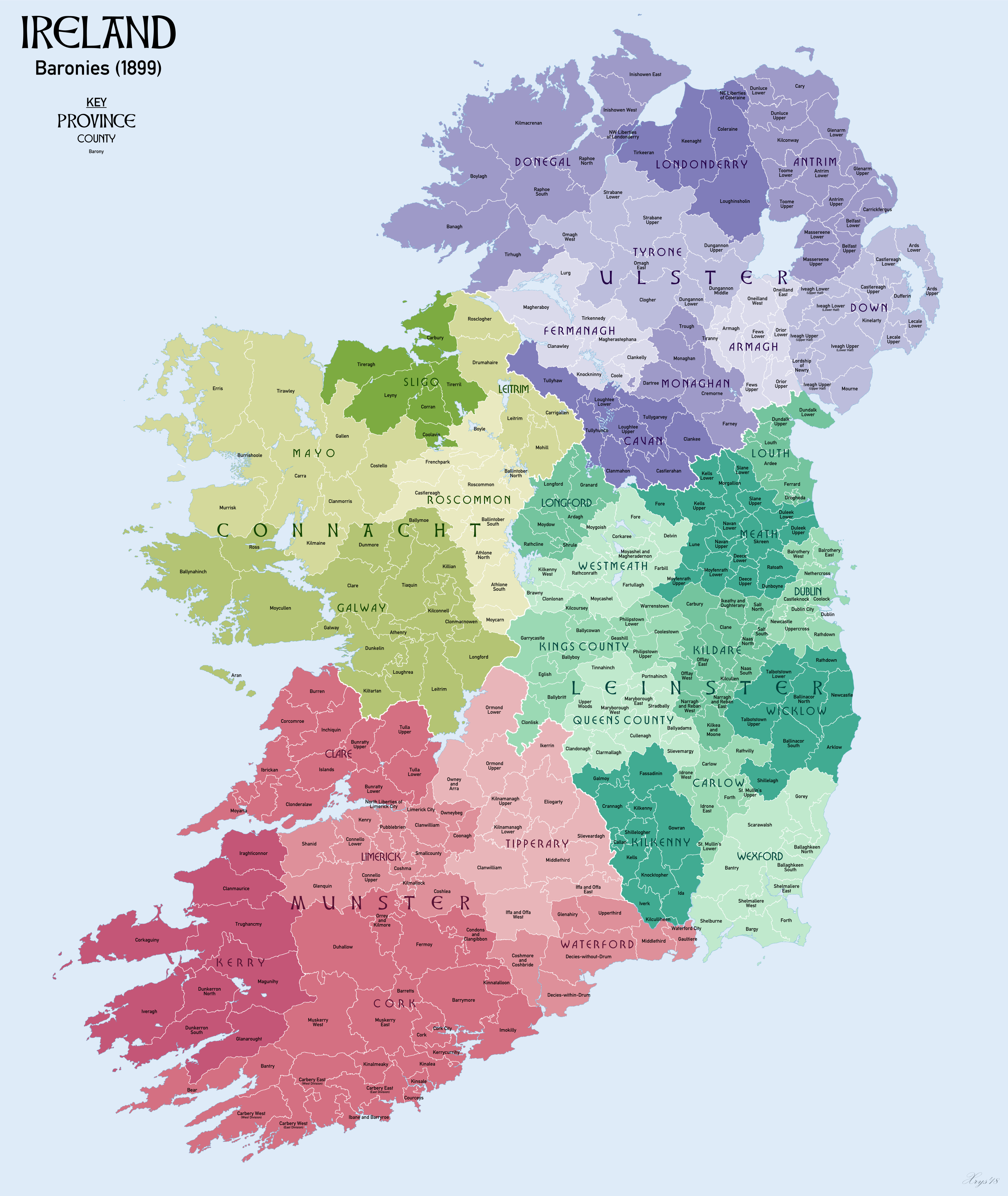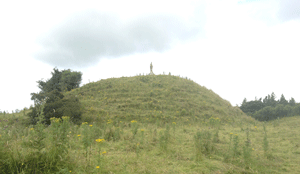|
Granard (barony)
Granard () is a barony in County Longford, Ireland. Etymology Granard barony derives its name from the village of Granard (Irish ''Gránard'', possibly meaning "sun height" or "corn height"). Location Granard barony is located in northeastern County Longford and contains Lough Gowna and many other lakes.http://www.rootsweb.ancestry.com/~irlkik/ihm/baronie3.htm List of settlements Below is a list of settlements in Granard barony: * Abbeylara *Ballinalee *Granard Granard () is a town in the north of County Longford, Ireland, and has a traceable history going back to AD 236. It is situated just south of the boundary between the watersheds of the Shannon and the Erne, at the point where the N55 nationa ... References Baronies of County Longford {{Longford-geo-stub ... [...More Info...] [...Related Items...] OR: [Wikipedia] [Google] [Baidu] |
Irish Language
Irish (an Caighdeán Oifigiúil, Standard Irish: ), also known as Gaelic, is a Goidelic languages, Goidelic language of the Insular Celtic branch of the Celtic language family, which is a part of the Indo-European languages, Indo-European language family. Irish is indigenous language, indigenous to the Ireland, island of Ireland and was the population's first language until the 19th century, when English (language), English gradually became Linguistic imperialism, dominant, particularly in the last decades of the century. Irish is still spoken as a first language in a small number of areas of certain counties such as County Cork, Cork, County Donegal, Donegal, County Galway, Galway, and County Kerry, Kerry, as well as smaller areas of counties County Mayo, Mayo, County Meath, Meath, and County Waterford, Waterford. It is also spoken by a larger group of habitual but non-traditional speakers, mostly in urban areas where the majority are second language, second-language speakers. ... [...More Info...] [...Related Items...] OR: [Wikipedia] [Google] [Baidu] |
Barony (Ireland)
In Ireland, a barony ( ga, barúntacht, plural ) is a historical subdivision of a county, analogous to the hundreds into which the counties of England were divided. Baronies were created during the Tudor reconquest of Ireland, replacing the earlier cantreds formed after the original Norman invasion.Mac Cotter 2005, pp.327–330 Some early baronies were later subdivided into half baronies with the same standing as full baronies. Baronies were mainly cadastral rather than administrative units. They acquired modest local taxation and spending functions in the 19th century before being superseded by the Local Government (Ireland) Act 1898. Subsequent adjustments of county boundaries mean that some baronies now straddle two counties. The final catalogue of baronies numbered 331, with an average area of ; therefore, each county was divided, on average, into 10 or 11 baronies. Creation The island of Ireland was "shired" into counties in two distinct periods: the east and sou ... [...More Info...] [...Related Items...] OR: [Wikipedia] [Google] [Baidu] |
List Of Sovereign States
The following is a list providing an overview of sovereign states around the world with information on their status and recognition of their sovereignty. The 206 listed states can be divided into three categories based on membership within the United Nations System: 193 member states of the United Nations, UN member states, 2 United Nations General Assembly observers#Present non-member observers, UN General Assembly non-member observer states, and 11 other states. The ''sovereignty dispute'' column indicates states having undisputed sovereignty (188 states, of which there are 187 UN member states and 1 UN General Assembly non-member observer state), states having disputed sovereignty (16 states, of which there are 6 UN member states, 1 UN General Assembly non-member observer state, and 9 de facto states), and states having a political status of the Cook Islands and Niue, special political status (2 states, both in associated state, free association with New Zealand). Compi ... [...More Info...] [...Related Items...] OR: [Wikipedia] [Google] [Baidu] |
Republic Of Ireland
Ireland ( ga, Éire ), also known as the Republic of Ireland (), is a country in north-western Europe consisting of 26 of the 32 Counties of Ireland, counties of the island of Ireland. The capital and largest city is Dublin, on the eastern side of the island. Around 2.1 million of the country's population of 5.13 million people resides in the Greater Dublin Area. The sovereign state shares its only land border with Northern Ireland, which is Countries of the United Kingdom, part of the United Kingdom. It is otherwise surrounded by the Atlantic Ocean, with the Celtic Sea to the south, St George's Channel to the south-east, and the Irish Sea to the east. It is a Unitary state, unitary, parliamentary republic. The legislature, the , consists of a lower house, ; an upper house, ; and an elected President of Ireland, President () who serves as the largely ceremonial head of state, but with some important powers and duties. The head of government is the (Prime Minister, liter ... [...More Info...] [...Related Items...] OR: [Wikipedia] [Google] [Baidu] |
Counties Of Ireland
The counties of Ireland ( Irish: ) are historic administrative divisions of the island into thirty-two units. They began as Norman structures, and as the powers exercised by the Cambro-Norman barons and the Old English nobility waned over time, new offices of political control came to be established at a county level. Upon the partition of Ireland in 1921, six of the traditional counties became part of Northern Ireland. In Northern Ireland, counties ceased to be longer used for local government in 1973; districts are instead used. In the Republic of Ireland, some counties have been split resulting in the creation of new counties: there are currently 26 counties, 3 cities and 2 cities and counties that demarcate areas of local government in the Republic. Terminology The word "county" has come to be used in different senses for different purposes. In common usage, it can mean the 32 counties that existed prior to 1838 – the so-called traditional counties, 26 of which are ... [...More Info...] [...Related Items...] OR: [Wikipedia] [Google] [Baidu] |
County Longford
County Longford ( gle, Contae an Longfoirt) is a county in Ireland. It is in the province of Leinster. It is named after the town of Longford. Longford County Council is the local authority for the county. The population of the county was 46,634 at the 2022 census. The county is based on the historic Gaelic territory of Annaly (''Anghaile''), formerly known as Teffia (''Teathbha''). Geography Most of Longford lies in the basin of the River Shannon with Lough Ree forming much of the county's western boundary. The north-eastern part of the county, however, drains towards the River Erne and Lough Gowna. Lakeland, bogland, pastureland, and wetland typify Longford's generally low-lying landscapes: the highest point of the county is in the north-west - Carn Clonhugh (also known as Cairn Hill or Corn Hill) between Drumlish and Ballinalee in the parish of Killoe, at . Cairn Hill is the site of a television transmitter broadcasting to much of the Irish midlands. In the l ... [...More Info...] [...Related Items...] OR: [Wikipedia] [Google] [Baidu] |
Granard
Granard () is a town in the north of County Longford, Ireland, and has a traceable history going back to AD 236. It is situated just south of the boundary between the watersheds of the Shannon and the Erne, at the point where the N55 national secondary road and the R194 regional road meet. History The town has been a centre of population since Celtic times, probably because of its elevated position offering a view over the surrounding countryside. It is mentioned in the ancient Irish epic, the '' Táin Bó Cuailgne'', as being one of the places where Queen Medb and her army stopped on their journey to take the '' Donn Cuailnge'' (the ''Brown Bull of Cooley''). The name of the village is itself so ancient as to be unclear even in Irish; the 11th-century writers of the '' Lebor na hUidre'' (containing the oldest written version of the ''Táin'') refer to it by means of a gloss as "''Gránairud Tethba tuaiscirt .i. Gránard indiu''" ("Gránairud of northern Teathbha, i.e. Gr� ... [...More Info...] [...Related Items...] OR: [Wikipedia] [Google] [Baidu] |
Lough Gowna
Lough Gowna () is a fresh water lake which is the uppermost lake on the River Erne. It is located on the border between County Longford and County Cavan, with the largest part of the lake being in County Longford. Lough Gowna is a moraine-dammed lake formed at the end of the last glaciation, and owes its complex indented shape to the underlying drumlin landscape. This results in a large number of bays and inlets on the lake, often connected by narrow channels. The river Erne enters the system in a western direction into the easternmost part of the lake (locally known as ''Derries Lough'') and exits northward through County Cavan. However, the damming caused by the moraines that gave rise to the lake result in large bodies of water to the north-west and south-west which form the bulk of the area of the lake. A number of other small rivers also flow into the lake. The county border runs through the north-western part of the lake, and then turns eastwards, with the western and south ... [...More Info...] [...Related Items...] OR: [Wikipedia] [Google] [Baidu] |
Abbeylara
Abbeylara () is a village in the easternmost portion of County Longford, Ireland, located about three kilometers east of Granard on the R396 regional road. Its name is derived from a monastery, the great Abbey of Lerha, founded in 1205 by Hiberno-Norman magnate, Risteárd de Tiúit, for Cistercian monks. The monastery was dissolved in 1539, although its ruins are still apparent on approach to the village. An ancient earthwork, the Duncla (Irish ''Dún-chlaí'' meaning "fortified ditch") or Black Pig's Dyke, which runs south-eastwards from Lough Gowna to Lough Kinale, goes through the larger parish of Abbeylara, and passes about one kilometre north of the village. Because of its proximity to Lough Kinale and Lough Derragh, with a plentiful supply of trout, tench, bream and pike, Abbeylara attracts anglers and local angling clubs hold regular competitions. Abbeylara GFC are the local Gaelic football Gaelic football ( ga, Peil Ghaelach; short name '), commonly known as ... [...More Info...] [...Related Items...] OR: [Wikipedia] [Google] [Baidu] |
Ballinalee
Ballinalee (), sometimes known as Saint Johnstown, is a village in north County Longford, Ireland. It is situated on the River Camlin, and falls within the civil parish of Clonbroney. As of the 2016 census, the village had a population of 347 people. Name The village name in Irish, ''Béal Átha na Lao'', (anglicised as Ballinalee) means "mouth of the ford of the calves". The village is also sometimes known as Saint Johnstown, a name associated with the local Church of Ireland church of St John. History The St Johnstown borough constituency in the Irish House of Commons was nominally representative of the town. In 1833, the Commissioners appointed by the UK Parliament to inquire into municipal corporations in Ireland reported that the corporation of the borough was "virtually extinct". The 1846 ''Parliamentary Gazetteer'' records: Antoine Ó Raifteiri's poem "The Lass From Bally-na-Lee" references the town. In 1798, the town was the scene of numerous summary execution ... [...More Info...] [...Related Items...] OR: [Wikipedia] [Google] [Baidu] |




